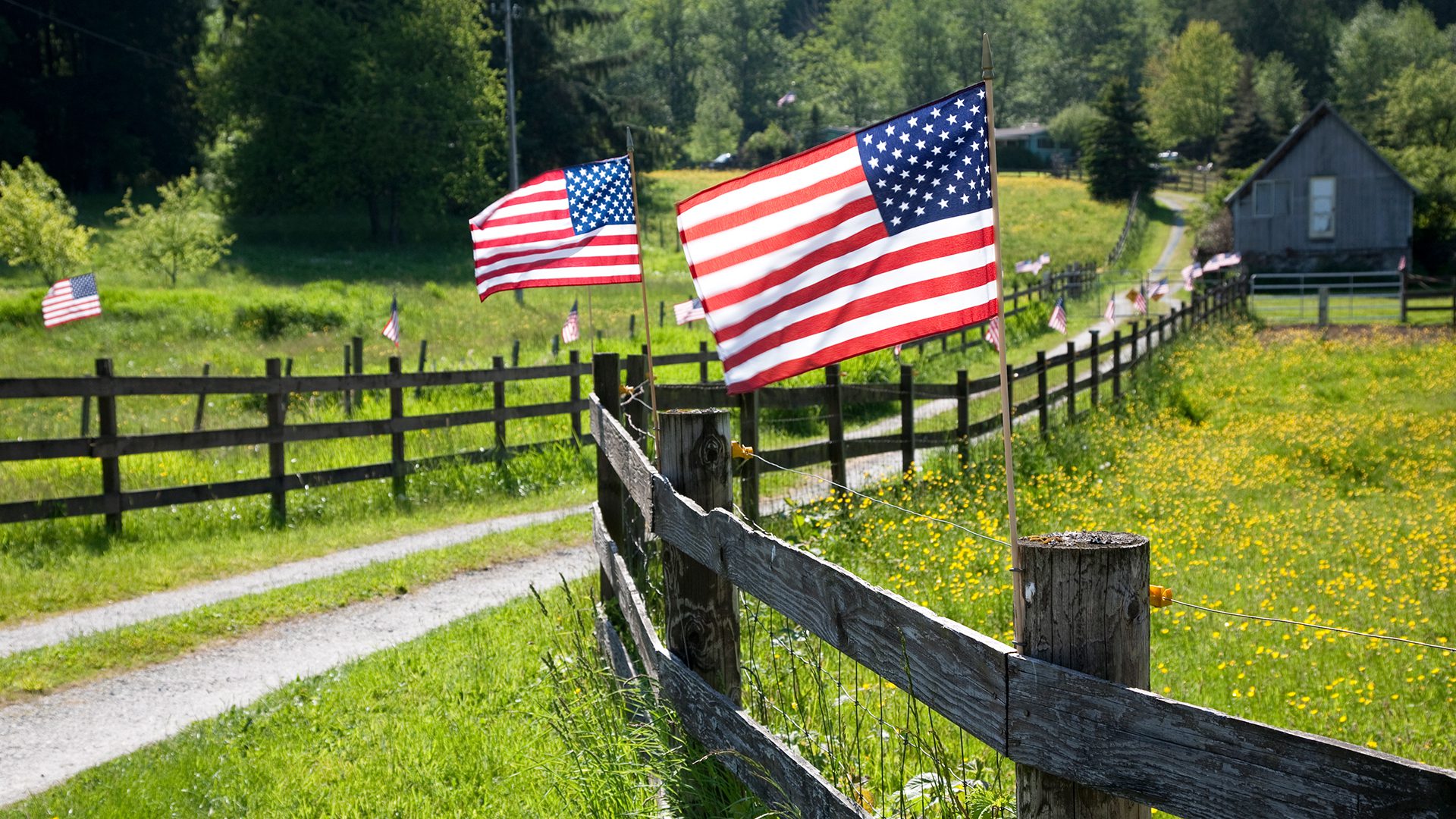- October 28, 2024
- By John Tucker
While political campaigning is centering on large metro areas as Election Day nears, rural voters in the western Pennsylvania mountains and the farmland of eastern North Carolina could help swing the contest in their battleground states—and more than ever, they’re pulling in one direction.
Party loyalties have shifted dramatically in America’s heartland in the past two decades, with recent polls showing former President Donald Trump leading Vice President Kamala Harris in the 2024 race for the White House 3-1 among rural and small-town constituents. It’s quite a leap from 2016, when Trump captured 62% of that population, and the numbers look even more lopsided compared to 2004, when Republican incumbent George W. Bush took 57% of the vote.
Still, the rural population—19% of U.S. voters in 2020—isn’t a monolith, according to University of Maryland government and politics Professor James Gimpel, who studies America’s rural electorate. Having grown up in small-town Nebraska with parents who owned and operated a Main Street retail store, “I’m somewhat sympathetic to these populations,” he said. “There are a lot of ugly stereotypes.”
To make lower-income rural people more tangible to urbanites and suburbanites, Gimpel assigns his students to read JD Vance’s memoir, “Hillbilly Elegy,” depicting the Republican vice-presidential candidate’s impoverished Appalachian upbringing.
In a conversation with Maryland Today, Gimpel discussed common misconceptions about rural voters, his thoughts on Harris’ Democratic vice-presidential candidate, Tim Walz (who attended college in Gimpel’s hometown), and his observations about both candidates during the Election Day sprint.
Does rural America’s rightward lunge go against its economic interests?
The population is in many ways low- to moderate-income, so people think it should fit the profile of a Democratic constituency. My view is that if you have lived through a series of elections, you see that no matter who wins, your economic plight remains unchanged. Pretty soon, economic conditions aren’t going to be relevant to your vote anymore. That makes cultural and moral considerations more of a central issue. The rural population is older, and some of the more progressive positions seem threatening. Trump won’t bring back coal jobs in West Virginia, and privately, people there will acknowledge it. But they’ll still drag their feet on green energy.
How much of the attrition is the Democrats’ fault?
Trump is rude, vulgar and morally offensive. That’s not lost on rural Americans, so the Democrats must really be viewed with contempt. They can point to any number of progressive issues: politically correct speech, hostility to religion, dietary practices that go beyond standard health recommendations, leniency toward criminal behavior. There’s a lot of snobbery and shaming from coastal elites. Given that, why wouldn’t there be a reaction that celebrates lowbrow cultural expression and mediocrity? Trump perfectly embodies that.
With this embrace of Trump, is it fair to call the rural vote a monolith?
Not entirely. Think about Vermont, a very rural state, but no one’s going to say it’s a hotbed of traditionalism. Economically, a lot of small towns are doing just fine, like many touristy mountain towns in places that specialize in recreation. Colorado once was red, but it brought in a new kind of service economy, as farming and ranching have faded. Some rural areas have distanced themselves from their agricultural past.
What are the biggest misconceptions about rural America?
That it’s racist and inhospitable and full of haters. There might be some resentments, and there might not be a lot of enlightenment in some towns, but I’m suspicious of the idea that every person in rural America is a Republican because they hate immigrants or Black people. Another thing not everyone realizes is that rural populations are much more content than city residents. That probably makes them cling to current conditions, making them conservative.
Could rural counties decide this election?
Sure, in the battleground states. The reason rural places are neglected by campaigns is that it’s hard to canvass in lightly populated areas. But turnout is very high—much higher than in a big city—because there’s a strong sense of community and engagement. To Kamala Harris’s credit, she hasn’t been as arrogant as past Democratic candidates. We don’t hear her talking about politically correct speech, shaming people for not knowing their pronouns or discussing an extreme green energy agenda. We even learned she’s a gun owner, which raised eyebrows of cultural elites on the coasts. There are still some votes to be had in the rural areas.
Does Tim Walz as her running mate help that effort?
Walz was supposedly brought on board to provide some measure of outreach to smaller towns and rural communities. He’s from Nebraska. He has some background with this population, but his record as Minnesota governor is more in line with the progressive wing of the Democratic party. I’m not sure he’s a credible voice.
Could the Black rural vote swing the election?
In the Deep South’s Black Belt, as well as the Border South, coastal areas in places like North Carolina—those should go to the Democrats. But their turnout might not be super high. On the flip side, it’s entirely possible that some of the alleged minority movement toward Trump comes from some of those rural minority places, similar to Latino shifts along the Texas border in 2020.
Visit UMD's 2024 Election Headquarters for more resources, news and events.
